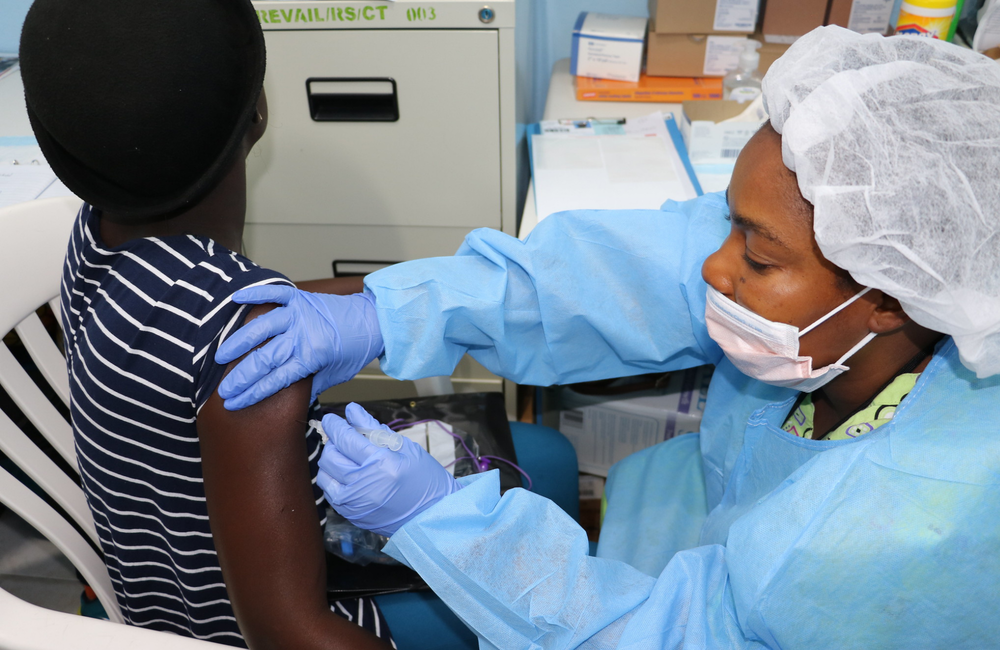
A comprehensive national effort to improve the uptake of cervical screening among women living with HIV in Uganda resulted in more than 280,000 screening visits in the second year of the campaign, up from just 6500 visits in the first six months.
The proportion of women with a positive result who received treatment increased from 12% to 84% during the same period, almost achieving the 90% target set by the World Health Organization for cervical cancer elimination by 2030.
Cervical cancer is the most common form of cancer diagnosed in women in Uganda and women with HIV are at especially high risk. Although Uganda’s health ministry recommended annual cervical screening for women living with HIV in 2010, provision of screening and uptake was low. By 2020, only 1% of clinics providing antiretroviral treatment to women had introduced cervical cancer screening. Late referral of women with HIV for cervical cancer treatment was common.
To tackle these problems and make progress towards World Health Organization targets for elimination of cervical cancer, Uganda’s Ministry of Health launched a drive to scale up cervical cancer screening for women with HIV in 2020.
The World Health Organization’s strategy for cervical cancer elimination by 2030 sets the following targets:
- 90% of girls are vaccinated against human papillomavirus by the age of 15
- 70% of women are screened by a high-performance test by the age of 35 and again by the age of 45
- 90% of women identified with cervical disease receive treatment
Also, the World Health Organization recommends that women living with HIV aged 25-49 receive cervical screening every three to five years.
Researchers from Uganda shared details of how they achieved dramatic increases in the uptake of screening, and lessons learned from the process, in a recent edition of the Bulletin of the World Health Organization.
The Ugandan Ministry of Health began planning its scale-up of cervical cancer services in early 2020, supported with funding from PEPFAR, the Global Fund and the Clinton Health Access Initiative. In the first phase, the Ministry of Health developed guidelines, procurement plans and training materials. Training of health workers began in August 2020, cascading down from regional and district-level roles to clinical staff.
Clinical staff were trained to assess women with HIV for cervical cancer screening eligibility, including consent procedures. They were trained in two screening methods, visual inspection with acetic acid, or instructing women on how to collect a cervical self-sample for HPV testing. Clinical staff also received training in how to interpret screening test results and how to choose appropriate treatment based on screening results.
Clinics began to implement screening from October 2020. Clinics with access to GeneExpert machines for sequencing implemented cervical self-sampling for HPV testing, followed by visual inspection with acetic acid for women who received a positive HPV test result. In clinics that lacked access to GeneExpert machines (94% of all clinics carrying out screening), all women underwent screening by visual inspection with acetic acid.
Women with precancerous lesions received ablation treatment, usually on the same day as screening. Women with lesions occupying more than 75% of the cervix were referred to regional hospitals for loop electrosurgical excision. All women who received treatment were scheduled for rescreening after one year.
Women with lesions suggestive of cervical cancer were referred to regional hospitals for biopsy and evaluation and cervical cancer was treated at the Uganda Cancer Institute.
During 2020 and 2021, the Ministry of Health targeted 1789 PEPFAR-supported clinics to scale up cervical screening and treatment. In year 1 of the scale-up, 306 clinics per 6-month period received training, commodities and equipment, increasing to 592 clinics per 6-month period in the second year. By the end of the scale-up period, 87% of the PEPFAR-supported clinics were carrying out cervical screening.
In year 1, the Ministry of Health set a target of screening 130,293 women per 6-month period, increasing to 141,257 women per 6-month period in year 2.
During the first six months, screening uptake was 5% of the target due to COVID-19, which restricted clinic access and caused supply chain disruption. In the second half of year 1, screening uptake was 79% of the target, in the first half of year 2 it reached 103% of the target and was 107% of the target in the second half of year 2.
In the first six-month period, 6% of women screened tested positive, of whom only 12% received treatment. The proportion of women testing positive remained consistent, at around 6%, throughout the scale-up period, but the proportion who received treatment increased to 56% in the second half of the first year and 84% in the second half of year 2. The proportion of women testing positive at sites which carried out HPV testing as well as visual inspection was consistently higher (10% - 13%) than at sites which used visual inspection only (1% - 3%).
Based on their review of the two-year scale-up, the Ugandan Ministry of Health reported several adjustments to the programme. The lower rate of positive diagnosis when using visual inspection led the Ministry of Health to provide enhanced training and supervision to help healthcare workers recognise precancerous lesions. They also addressed barriers to treatment by ensuring that all HIV clinics had the appropriate equipment to carry out ablation by September 2021, and improved tracking of women who had tested positive to ensure that they came back to the clinic for treatment.
Kalamya JN et al. Provision of cervical cancer services for women living with HIV, Uganda. Bulletin of the World Health Organization, 102: 382-8, 2024.
Full image credit: Ebola Vaccine Study in West Africa. Image by NIAID. Available at www.flickr.com/photos/niaid/33085205143/ under a Creative Commons licence CC BY 2.0.
